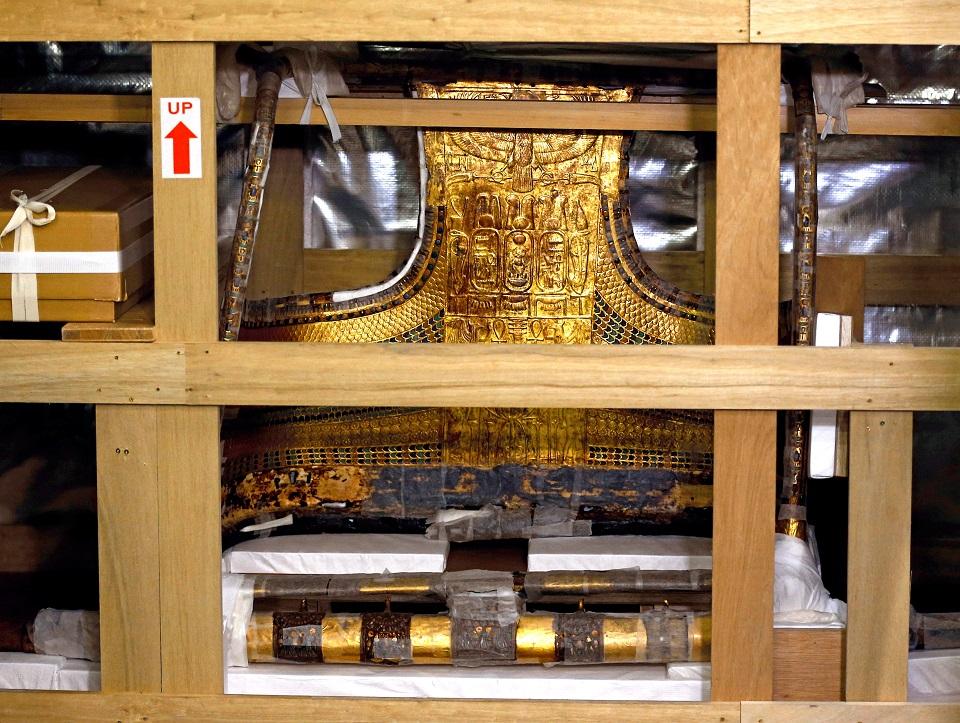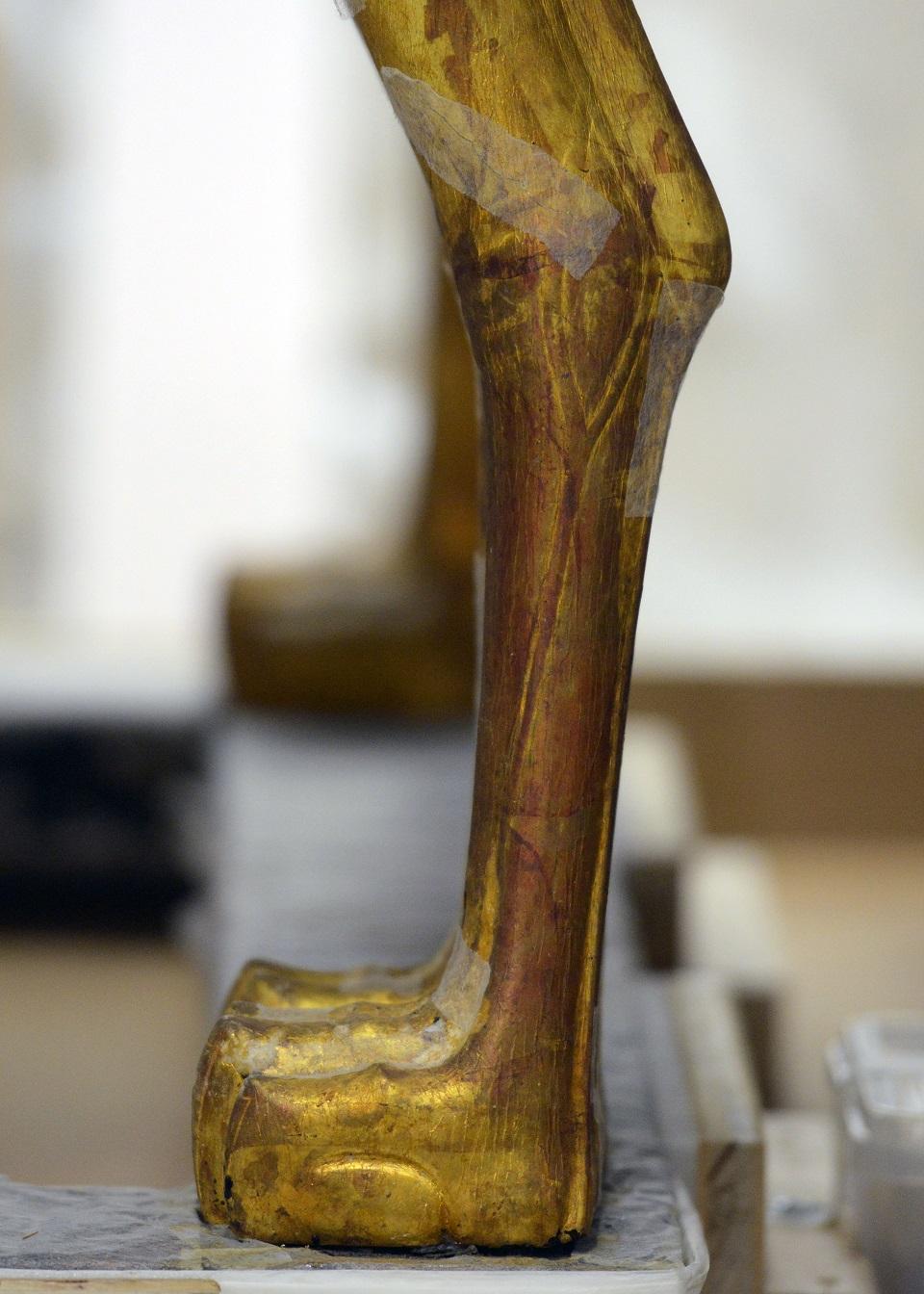New Cairo museum hopes Tutankhamun’s chariot will draw tourists

CAIRO - A chariot and funeral bed belonging to ancient Egypt's boy-king Tutankhamun were safely moved on Tuesday across Cairo to a new museum that Egypt hopes will lure back wary tourists.
Just beyond the Great Pyramids of Giza in the basement of Cairo's Grand Egyptian Museum, which is set to be the world's largest archaeological museum when it opens in 2018, Egyptian and Japanese restoration experts unpacked the pharaoh's treasured arteficts from sealed wooden boxes.
Some of the world's oldest relics, including dozens belonging to King Tut, who ruled Egypt more than 3,000 years ago, are being carefully shuttled from the old Egyptian Museum in central Cairo to the vast halls of the new one 23 kilometers away.
Egypt is hoping the splashy new museum will be a draw for tourism, a crucial pillar of its economy that has struggled since a 2011 political uprising drove away visitors who once flocked to ancient Pharaonic temples and pyramids.
Transporting the artifacts became an issue of international concern in 2014 after the beard of the ancient Egyptian king's golden burial mask was accidentally broken off by workers changing the lights in its display case.

The workers later tried to crudely reattach the beard with a an epoxy glue compound that damaged the mask, prompting outrage among archaeologists.
King Tut ruled Egypt as pharaoh for 10 years until his death at age 19, around 1324 B.C.
His nearly intact tomb was discovered in the Valley of the Kings in Luxor in 1922 by British archaeologist Howard Carter.
The king's funeral bed is made of wood gilded with gold leaf and decorated with the head of the lioness goddess Sekhmet.
Wrapped in foil to preserve its moisture levels, the ancient relic was transported across the city in a pick-up truck flanked by police cars, said Tarek Tawfik, the museum's general supervisor.
"We will transfer over 1,000 objects from the old museum in the next months to be restored and prepared for exhibition," Egypt's Antiquities Minister Khaled al-Anani told journalists.
Tourism has continued to suffer amid a growing number of militant attacks, including two Islamic State church bombings last month.
Earlier this month Egypt unearthed an ancient burial site replete with at least 17 mummies, clay sarcophagi, animal coffins, and papyrus inscribed with Demotic script. — Reuters



